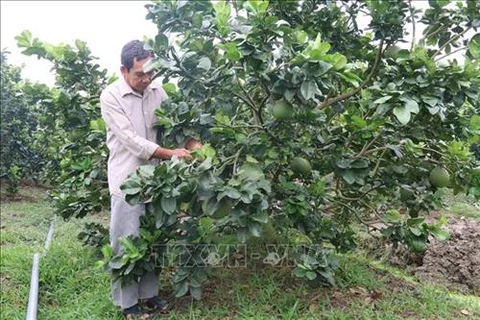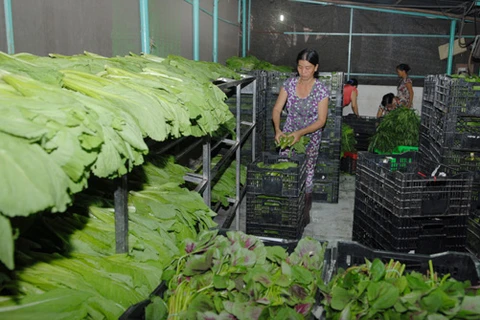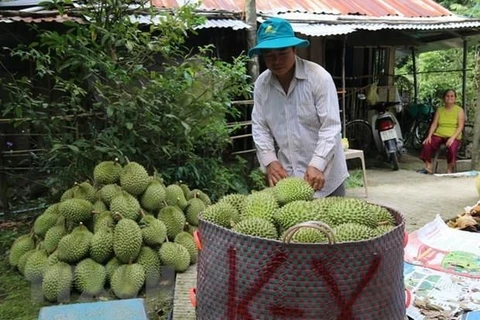Hanoi (VNA) – The household poverty rate is set to reduce further this year, but the wealth gap is still widening, according to the Ministry of Labour, Invalids and Social Affairs (MoLISA).
MoLISA Deputy Minister Le Quan said at a meeting of the central steering committee for national target programmes in Hanoi on July 25 that the household poverty rate is expected to decline to 4.5 percent in 2019, meeting the target set by the National Assembly.
However, poverty elimination remains unsustainable because aside from poverty relapse, the rate of new poor households is high, 17.8 percent of the households escaping from poverty in 2018.
Meanwhile, the wealth gap hasn’t been shrunk when the income gap between the richest and poorest widened from 9.7 times in 2014 to 10 times in 2018.
Quan attributed the problem partly to many households’ location in areas with complex natural conditions, which has hampered the effective implementation of solutions to eradicating poverty through sustainable livelihoods. Additionally, their accessibility to public services and the market remains modest.
Deputy Prime Minister Vuong Dinh Hue said it is worrying that there are 18 new poor households every 100 which already escaped from poverty. The number of communes, hamlets and villages emerging from the particularly disadvantaged status is very low and unlikely to meet the target set for 2019-2020 as only 44 of those 292 communes have been relieved from poverty.
The target of lifting all households of revolution contributors out of deprivation in 2019 is also a challenge now, he said, adding that only about 20 of the 53 provinces with poor households being revolution contributors’ are likely to solve this issue thoroughly this year.
Without good solutions, this target will remain unachievable even in 2020, but the Government, the National Assembly and the steering committee are determined in addressing this issue, he noted. -VNA
MoLISA Deputy Minister Le Quan said at a meeting of the central steering committee for national target programmes in Hanoi on July 25 that the household poverty rate is expected to decline to 4.5 percent in 2019, meeting the target set by the National Assembly.
However, poverty elimination remains unsustainable because aside from poverty relapse, the rate of new poor households is high, 17.8 percent of the households escaping from poverty in 2018.
Meanwhile, the wealth gap hasn’t been shrunk when the income gap between the richest and poorest widened from 9.7 times in 2014 to 10 times in 2018.
Quan attributed the problem partly to many households’ location in areas with complex natural conditions, which has hampered the effective implementation of solutions to eradicating poverty through sustainable livelihoods. Additionally, their accessibility to public services and the market remains modest.
Deputy Prime Minister Vuong Dinh Hue said it is worrying that there are 18 new poor households every 100 which already escaped from poverty. The number of communes, hamlets and villages emerging from the particularly disadvantaged status is very low and unlikely to meet the target set for 2019-2020 as only 44 of those 292 communes have been relieved from poverty.
The target of lifting all households of revolution contributors out of deprivation in 2019 is also a challenge now, he said, adding that only about 20 of the 53 provinces with poor households being revolution contributors’ are likely to solve this issue thoroughly this year.
Without good solutions, this target will remain unachievable even in 2020, but the Government, the National Assembly and the steering committee are determined in addressing this issue, he noted. -VNA
VNA
























